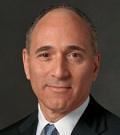 |
| Novartis CEO Joe Jimenez |
Novartis ($NVS) execs are rolling up their sleeves for another round of cost cuts. "Very significant" cost cuts, CEO Joe Jimenez tells the Financial Times, partly from the company's ongoing overhaul in back-office operations--and partly from its sale-and-swap with GlaxoSmithKline ($GSK), which closed last week.
Jimenez didn't say just how he plans to squeeze out costs and boost profit margins now that the GSK deal is done. But closing the GSK transaction has some logical consequences: Novartis can strike off any costs associated with its low-performing vaccines unit, for one, because that's now in GSK's hands. Its consumer business is also out the door, in a joint venture managed by GSK, where overlapping operations are likely ripe for cutting.
Then there's the Glaxo oncology business, to be folded into Novartis' cancer operations. The Swiss drugmaker has said it can use its own infrastructure to pump up sales of GSK's cancer meds, including the melanoma newcomers Tafinlar and Mekinist. That could mean cuts in the commercial apparatus that came along with those meds.
Meanwhile, Novartis is still shedding costs via its Novartis Business Services group, which is taking over back-office functions worldwide. Previously, that sort of administrative work was handled operation by operation around the globe. The new effort required 7,000 jobs to be transferred to the new unit, a process that triggered some resistance from area managers. But it went "more smoothly" than he expected, Jimenez told the FT.
Among those moves was a new operations center in India, with space for 8,000 workers. Hundreds of jobs elsewhere in the company have shuffled to that facility, according to media reports.
"When a manager sees a situation where [Novartis Business Services] helps lower costs for their part of the business they are going to support that through enlightened self-interest," Jimenez noted in the interview.
Jimenez figures that saving money via business-services streamlining will allow the company to continue putting billions behind R&D and product launches, including the forthcoming LCZ696, the highly anticipated heart failure drug that Novartis sees as its biggest launch ever. The company is also continuing a manufacturing consolidation that's also designed to save money.
Of course, this sort of cost squeeze isn't solely Jimenez's idea. Investors have been pressing for bigger margins at the company, and putting a squeeze on spending post-merger is a time-honored tactic. And it's far from new at Novartis, whose U.S. labor force shrank by more than 1,700 last year, accounting for much of its 2,200-employee decline globally.
And Jimenez figures that his company's efficiency push--including its $1.6 billion savings on procurement--will be contagious across the industry. After all, Big Pharma has been cutting costs wherever possible for years now, as huge blockbuster drugs went off patent. And now, there are new pressures from payers to contend with.
"The whole industry has shifted to managing costs in a tighter manner because reimbursement [for medicines] is more difficult and because the cost of developing a new drug is higher," he said.
- read the FT story
Special Reports: Top 10 pharma companies by employees - Novartis | Top 10 largest pharma layoffs of 2013 - Novartis